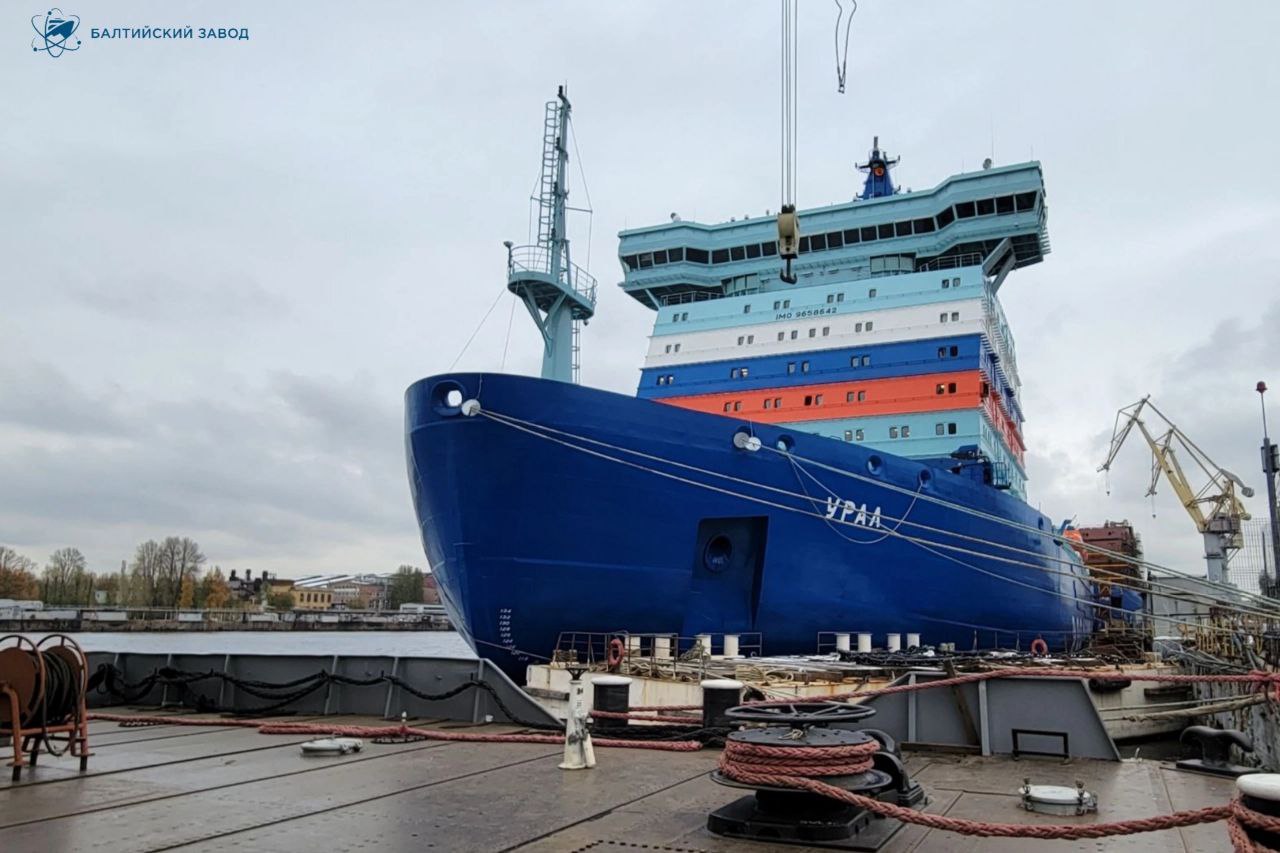
The nuclear-powered icebreaker was undergoing scheduled maintenance and warranty service in St. Petersburg
The multipurpose nuclear icebreaker Ural (Project 22220) left the outfitting dock of Baltic Shipyard (part of USC) on November 7, 2023 and headed for its home port of Murmansk, Atomflot’s said on its Telegram messenger.
“Scheduled maintenance has been completed. Now the ship is en route in the Baltic Sea. The nuclear-powered icebreaker is expected to arrive in Murmansk approximately on the 14th of November and its icebreaking support is needed in the waters of the Northern Sea Route,” the message adds.
In accordance with the contract terms, specialists of Kronstadt Marine Plant (also a company of USC) inspected the underwater part of the hull, the bottom-side fittings and the steerable propulsion unit, and carried out scheduled maintenance, including painting of the vessel’s underwater part. The repair took 55 days instead of scheduled 60 days. As the distance between the dock doors is only 3 meters wider than the icebreaker breadth overall (34 m), floating out from the dock required special precision. From the Kronstadt facility, the Ural headed for the Baltic Shipyard for undergoing warranty service at its outfitting dock.
The Ural is the third ship of Project 22220 built by Baltic Shipyard to RS class, with a keel-laying ceremony held July 26, 2016, launching May 26, 2019 and flag-hoisting ceremony on November 22, 2022. The newbuild was delivered to FSUE Atomflot seven days later.
Project 22220 nuclear-powered icebreakers are the largest and most powerful icebreaking ships in the world. The vessels were designed to assist shipping year round within the Arctic basin. Three icebreakers of the series (“Arctic”, “Siberia” and “Ural”) are currently operating in the waters of the Northern Sea Route. Baltic Shipyard is building at its production facilities two more icebreakers of Project 22220, the Yakutia and the Chukotka.
Main characteristics of Project 22220 nuclear icebreakers: length - 174 m; width - 34 m; draft -10.5 m/9.3 m; power - 60 MW (on shafts); displacement - 33.54 thousand tons; design service life - 40 years; crew size - 54 people.
Key particulars of Project 22220: engine rated power: 60 MW; cruising speed: 22 knots (in ice-free water); LOA - 174 m; beam: 34 m (33 m, DWL); height: 52 m; draft (DWL): 10.5 m/8.65 m; minimum draft: 9.3 m, full displacement: 33,540 tonnes; maximum icebreaking capability: 2.8-meter-thick ice (at full capacity and speed of 1.5-2 knots); designated service life: 40 years, crew: 53.
Saint-Petersburg, Russia based Baltic Shipyard (Baltiysky Zavod) was established in 1856 and today is a 100% subsidiary of the state-owned United Shipbuilding Corporation (USC). The shipyard specializes in the construction of Rank 1 surface crafts, ice class vessels with nuclear and diesel-electric propulsion, of nuclear floating energy units and floating distilling plants. Since its inception Baltic Shipyard has built over 600 ships and vessels. The shipbuilding company employs more than 6,000 people.



